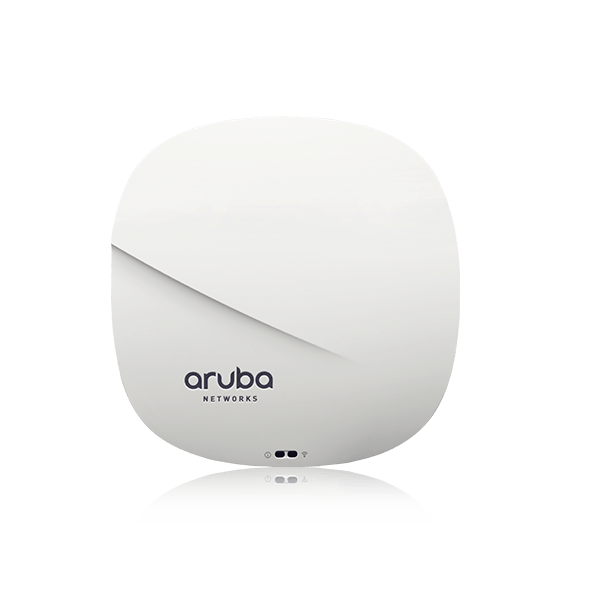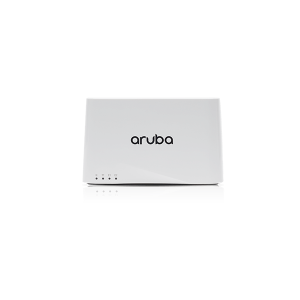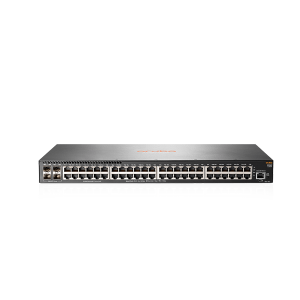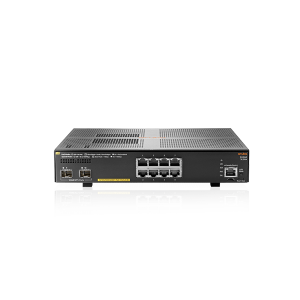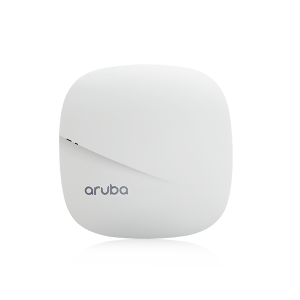Description
Overview:
ArubaOS allows the 330 series to automatically detect and classify 802.11ac Wave 2 compatible mobile devices thanks to ClientMatch technology. This enables ClientMatch to gather Wave 2 capable devices under a single Wave 2 radio, allowing multiuser MIMO performance to be realised without the drawbacks of slower 802.11ac and classic 802.11n capable mobile devices. This translates to more network capacity and improved network efficiency.
The 330 Series Access Points deliver a best-in-class, next-generation 802.11ac Wi-Fi infrastructure that is ideal for lecture halls, auditoriums, public venues, and high-density office environments, with a maximum concurrent data rate of 1,733 Mbps in the 5 GHz band and 600 Mbps in the 2.4 GHz band (for an aggregate peak data rate of 2.3Gbps).
UNIQUE BENEFITS
• Dual Radio 802.11ac access point with Multi-User MIMO
– Supports up to 1,733 Mbps in the 5 GHz band (with 4SS/VHT80 or 2SS/VHT160 clients) and up to 600 Mbps in the 2.4 GHz band (with 4SS/HT40 clients)
• Antenna polarization diversity for optimized RF performance
– Each 5 GHz radio chain has a switch and two antennas
– Software controlled; Horizontally and vertically polarized Integrated Trusted Platform Module (TPM) for secure storage of credentials and keys
– SecureJack-capable for secure tunneling of wired Ethernet traffic
• Intelligent Power Monitoring (IPM)
– Enables the AP to continuously monitor and report its actual power consumption and optionally make autonomous decisions to disable certain capabilities
based on the amount of power available to the unit
– Software configurable to disable capabilities in certain orders. For the 330 Series Access Points, by default, the USB interface will be the first feature to turn off if the AP power consumption exceeds the available power budget.
SPECIFICATIONS
• AP-334 (controller-managed) and IAP-334 (Instant):
– 5GHz 802.11ac 4×4 MIMO (1,733 Mbps max rate) and 2.4 GHz 802.11n 4×4 MIMO (600 Mbps max rate) radios, with a total of four dual-band RP-SMA
connectors for external antennas
• AP-335 (controller-managed) and IAP-335 (Instant):
– 5GHz 802.11ac 4×4 MIMO (1,733 Mbps max rate) and 2.4 GHz 802.11n 4×4 MIMO (600 Mbps max rate) radios, with a total of twelve integrated omni-directional downtilt antennas.
WI-FI RADIO SPECIFICATIONS
• AP type: Indoor, dual radio, 5 GHz 802.11ac 4×4 MIMO and 2.4 GHz 802.11n 4×4 MIMO
– In addition to 802.11n, the 2.4 GHz radio supports all 802.11ac features as well (proprietary extension)
• Software-configurable dual radio supports 5 GHz (Radio 0) and 2.4 GHz (Radio 1)
• 5 GHz:
– Four spatial stream Single User (SU) MIMO for up to 1,733 Mbps wireless data rate to individual 4×4 VHT80 or 2×2 VHT160 client devices
– Four spatial stream Multi User (MU) MIMO for up to 1,733 Mbps wireless data rate to up to three MU-MIMO capable client devices simultaneously
• 2.4 GHz: Four spatial stream Single User (SU) MIMO for up to 600 Mbps wireless data rate to individual 4×4 HT40 client devices
• Support for up to 256 associated client devices per radio, and up to 16 BSSIDs per radio
• Supported frequency bands (country-specific restrictions apply):
– 2.400 to 2.4835 GHz
– 5.150 to 5.250 GHz
– 5.250 to 5.350 GHz
– 5.470 to 5.725 GHz
– 5.725 to 5.850 GHz
• Available channels: Dependent on configured regulatory domain
• Dynamic frequency selection (DFS) optimizes the use of available RF spectrum
• Supported radio technologies:
– 802.11b: Direct-sequence spread-spectrum (DSSS)
– 802.11a/g/n/ac: Orthogonal frequency-division multiplexing (OFDM)
WI-FI ANTENNAS
• AP-334/IAP-334: Four RP-SMA connectors for external dual band antennas. Internal loss between radio interface and external antenna connectors (due to diplexing circuitry): 2.3 dB in 2.4 GHz and 1.2 dB in 5 GHz.
• AP-335/IAP-335
– Four (vertically polarized) integrated 2.4 GHz downtilt omni-directional antennas for 4×4 MIMO with peak antenna gain of 3.8dBi per antenna.
– Each 5 GHz radio chain has both a vertically and a horizontally polarized antenna element; AP software automatically and dynamically selects the best set of elements for each data packet transmitted or received.
• AP-334/IAP-334: Four RP-SMA connectors for external dual band antennas. Internal loss between radio interface and external antenna connectors (due to diplexing circuitry): 2.3 dB in 2.4 GHz and 1.2 dB in 5 GHz.
• AP-335/IAP-335
– Four (vertically polarized) integrated 2.4 GHz downtilt omni-directional antennas for 4×4 MIMO with peak antenna gain of 3.8dBi per antenna.
– Each 5 GHz radio chain has both a vertically and a horizontally polarized antenna element; AP software automatically and dynamically selects the best set of elements for each data packet transmitted or received.
Direct DC source: 48Vdc nominal, +/- 5%
– Interface accepts 1.35/3.5-mm center-positive circular plug with 9.5-mm length
• Power over Ethernet (PoE): 48 Vdc (nominal) 802.3af/802.3at compliant source
– When using IPM, the AP may enter power-save mode with reduced functionality when powered by a PoE source (see details on Intelligent Power Monitoring in this datasheet)
– Without IPM the AP will apply some fixed restrictions when using PoE:
> The USB interface is disabled when using an 802.3at PoE power source
> The USB interface and second Ethernet port are disabled, and both radios operate in 1×1 mode when using an 802.3af POE power source
• Maximum (worst-case) power consumption: 25.3W (802.3at PoE), 13.2W (802.3af PoE) or 25W (DC)
– Excludes power consumed by external USB device (and internal overhead); this could add up to 5.9W (PoE or DC) for a 5W/1A USB device
• Maximum (worst-case) power consumption in idle mode: 10.9W (PoE or DC)
OTHER INTERFACES
• One HPE Smart Rate port (RJ-45, maximum negotiated speed 5Gbps)
– Auto-sensing link speed (100/1000/2500/5000BASE-T) and MDI/MDX
– 2.5Gbps and 5Gbps speeds comply with NBase-T and 802.3bz specifications
– PoE-PD: 48 Vdc (nominal) 802.3at PoE
• One 10/100/1000BASE-T Ethernet network interface (RJ-45)
– Auto-sensing link speed and MDI/MDX
– PoE-PD: 48 Vdc (nominal) 802.3at PoE
• Link aggregation (LACP) support between both network ports for redundancy and increased capacity
• DC power interface, accepts 1.35/3.5-mm center-positive circular plug with 9.5-mm length
• USB 2.0 host interface (Type A connector)
• Bluetooth Low Energy (BLE) radio
– Up to 4 dBm transmit power (class 2) and -91 dBm receive sensitivity
– Integrated antenna with roughly 30 degrees downtilt and peak gain of 5.1 dBi (AP-334/IAP-334) or 2.2 dBi (AP-335/IAP-335)
• Visual indicators (tri-color LEDs): for System and Radio status
• Reset button: factory reset (during device power up)
• Serial console interface (RJ-45, RS232)
• Kensington security slot

